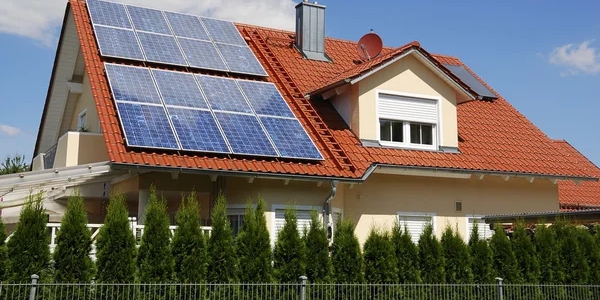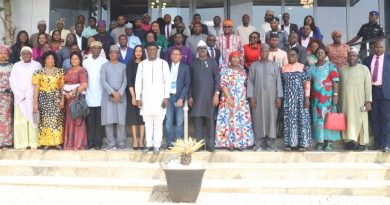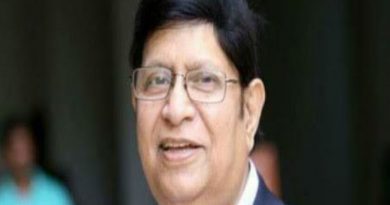State of Healthcare Infrastructure and Solarisation of PHC in Nigeria by
Tunde Salman, Isese Sor, and Benjamin Oyekunle, Good Governance Team (GGT), Abuja
The importance of a healthy citizenry to the overall development of a nation cannot be overemphasized. To be clear, the critical role of an efficient Primary Health Care (PHC) system in effective healthcare service delivery is understood, evident in several policy frameworks enunciated overtimes. Successive administrations at different levels prioritize the building of new PHC facilities, paying lesser attention to their functionality as many of these facilities are dilapidated making them functioning less optimally. Although challenges facing Nigeria’s health sector have been well interrogated, one key challenge to the optimal functionality of PHCs in the country is inadequate or total lack of regular power supply. It should be expected in a nation where over 80 million people are not connected to the grid electricity; where total energy required is in excess of 40,000MW but total available power generation standing at 5,000MW; where the national grid collapses several times in a month and where people sometimes get less than 5 hours of electricity supply per day.
Reliable, constant electricity is an enabler of quality health service. But the national energy poverty has impacted negatively on the quality of services available at healthcare institutions in the country especially at the level of PHC. This is accentuated by existing policy orientation in terms of electrification of healthcare institutions that over-rely on dirty alternatives such as fossil fuel generators. It is within the context of deepening conversation between health and energy nexus that the Good Governance Team (GGT) Nigeria with the support of Heinrich Boll Stiftung (HBS), the German Green Foundation, Abuja Country Office, convened a policy dialogue sometimes late last year to find sustainable clean alternative energy solutions for powering healthcare institutions, especially the PHCs which bear 70% of healthcare burden.
Themed: sustainable energy solutions with innovative funding models for powering the PHCs in Nigeria, the dialogue – which was held on Wednesday, October 6th, 2021 at the Event Centre, Bolton White Apartments (Wuse, Zone 7) Abuja. It provided a platform for diverse stakeholders cutting across public and private sectors, development partners and donor agencies, RE solution providers, CSOs, and the media – to interrogate how to sustainably power PHC facilities in Nigeria with flexible funding models.
In a remark, the convener and project’s team lead, Tunde Salman, emphasized the need for concerted actions for powering of PHCs noting that energy remains crucial to the functionality of PHCs, and ultimately achieving quality healthcare delivery. He revealed that 80% of PHCs lack power due to poor grid connection and the high maintenance cost of generators aside from being environmentally unfriendly, making solar energy the most suitable for PHCs electrification. Stressing the need to prioritize policy action, Salman expressed concerns about the poor state of infrastructure in PHCs facilities across the country; which is why GGT aligns with PHCs’ revitalization policy thrust of government. He said incorporating RE solutions at the policy level in PHCs electrification design in Nigeria would incentivize the solution providers.
The convener disclosed that given the connection between better health outcomes and reliable constant power supply, GGT has prioritized energy efficiency transition of public social sector in the last five years using research, advocacy, stakeholders’ engagements, awareness creation and sensitization to raise policy attention on renewable energy (RE) for PHCs promoting #Solar4PHCs in Nigeria. Hence, he noted that the policy dialogue was convened to further the conversations of experience sharing in best practices by RE professionals, solutions providers, and financiers directly interfacing with the subnational health authorities under auspices of Forum of Executive Secretaries/ Directors of State Primary Healthcare Development Board (SPHCDB) as well as others actors interested in improving the functionality of PHCs in Nigeria.
In their goodwill messages, the Federal Ministry of Health (represented by Mr. Suleman Nuhu) appreciated the convener for the wonderful efforts in promoting improved healthcare systems in Nigeria. While wishing fruitful deliberations at the dialogue, the UNFPA’s representative (Dr Samson Ezikeanyi) said the topic aligns with the UNFPA’s works which is to ensure no woman dies giving birth. Emphasizing that PHC is key to the attainment of universal healthcare coverage; Dr. Samson stated that no nation develops relying only on donor support saying the main point now was not what should be done but how to do it.
On his part, Dr. Olugbenga Bejide from Health Reform Foundation of Nigeria (HERFON) stated that in spite of the enactment of the National Health Act since 2014, the legislation has not been fully operationalized thereby hindering its effective implementation. He acknowledged that lack of constant reliable power is proving a formidable hindrance. He said 70% of Nigerians get their care from PHCs but lamentably many of them are not functioning optimally even in FCT where only one PHC/ Area Council is averagely functional. While pointing out that power is essential to the functionality of PHCs, Dr. Bejide advocated that a portion of funding from the Basic Healthcare Provision Fund (BHCPF) be dedicated to electrifying PHCs stressing that adequate funding of the sector is critical to strengthen the healthcare delivery system in Nigeria.
In his goodwill message, Mr. Babatunde Adegbesan, a CSO’s leader bemoaned the uselessness of having a non-functional [PHC] structure agreeing that RE remains the good alternative solution to powering the PHCs to make them functional 24/7. Similarly, the HBS Program Manager (Donald Ikenna) highlighted the contributions of the Green foundation to energy efficiency transition in Nigeria particularly with reference to the promotion of policy actions for green solutions. While expressing appreciation for the huge presence of RE solutions providers, Mr. Donald asked the dialogue to dwell on the solutions.
State of energy infrastructure at PHCs (problems and prospects)
Diagnosing the state of PHC infrastructure, the panelists drawn from the forum of the SPHCDB’s Executive Directors/Secretaries related experiences on the pitiful state of PHCs infrastructure from their respective states. Setting the tone for the panel discussion, the moderator (Dr. Bejide of HERFON), linked the collapse of PHCs infrastructure to a variety of factors and enjoined the panelists to share their thoughts on how to improve access to clean reliable constant electricity to PHC facilities. He alluded to the situational analysis report previously published by the HBS using the FCT realities as an index case which captured associated problems of lack of power in PHCs in spite of billions of naira yearly budgeted for PHCs rehabilitation.
The panelists acknowledged inadequate access to power as recurrent in all the states and enumerated effects of lack of 24/7 access to power the PHCs to include: inability to store vaccines and other drugs requiring refrigeration; lack of clean water due to lack of energy to power boreholes; sanitation problem resulting from water scarcity; night security; demoralized personnel; poor service delivery or total lack of it in many instances; and apathy on the part of community members.
Despite one functional PHC per ward strategy, some of the factors affecting the state of infrastructure of PHC facilities as distilled from the panel discussion include:
Ø Building of PHCs without incorporating other energy sources into the design
Ø Faulty policy guideline which prescribes grid and fossil fuel generator for PHCs
Ø Funding problem: inability to pay electricity bills leading to disconnection (in many instances, to power some PHC facilities, patients and health workers sometimes contribute money to buy fuel generators from their own pockets)
Ø Lack of fund for alternative energy etc.
Ø Low budget and poor budget release as it was revealed that PHC bear over 70% of health service burden but receives less than 20% of the allocation.
Ø Indiscriminate building of health facilities without equipment
In the final analysis, the panellists see strong prospects in RE solutions for the electrification of PHCs. Outlining the qualities of alternative options to include: cleanness; noiseless; environmental friendly; constant, reliable and sustainable; easy to maintain and; cost effective. Additionally, the session also hinted at the possibility of other alternative energy options such as Biogas, Wind, Hydro, and Solar but settled for solar based on its easily deployable nature, low maintenance, availability of sunlight in Nigeria, longer life span etc.
Having settled for solar as the most preferred alternative energy solutions for powering PHCs in Nigeria, the RE solution providers led by Dr. Segun Adaju, President, Renewable Energy Association of Nigeria (REAN); Dr. Jafaru Mahmud, Managing Director, NASENI Solar Energy Ltd; Mr. Yusuf Suleiman MD/CEO, Blue Camel Energy; Mr. Steven Emer of Haiertech; as well as Mr. Oluwatobi Shoyombo of Haven Hills Ltd acknowledged the edge of solar energy technologies over other alternatives and unanimously agreed that though cost-effective in the long run, notwithstanding the huge start-up cost put at 80%.
Dr. Adaju, the REAN President, was optimistic that once government signifies policy commitment to electrify the PHCs through RE, its members has the capacity to provide the solutions across the country. To this end, other members present went ahead to present different RE solutions and flexible funding options. For example, the CEO of Blue Camel disclosed that the Central Bank of Nigeria had set aside the sum of 140 billion naira to power 5 million homes with solar energy and that after much pressure health facilities and small scale ventures have been included in the intervention aside the prospect of bankable financing from commercial banks if guaranteed by government’s irrevocable standing order.
Similarly, Mr Shoyombo of Haven Hills also disclosed that the World Bank funded intervention under the Nigerian Electrification Project had a 350 million dollars fund for clean RE which governments has effected a reallocation to cover the 400 healthcare institutions as part of COVID-19 response. The RE solution providers advised the government to see solarisation of primary healthcare as a programme, not a contract/project.
Concrete Recommendations:
Accelerate the adoption of RE solutions as default alternative in the policy guideline for the design of PHCs electrification as envisaged in the new draft National Minimum Standard for PHCs infrastructure in Nigeria.
Commit to adopt the new draft National Minimum Standard for implementation at the subnational level to fast-track the adoption of RE solutions as default alternative in the electrification of PHCs facilities across the country.
iii. Create budget line for #Solar4PHC (budgeting-for-solarization of PHCs) in the state health budget and commit to full budget release and utilization.
Explore Public-Private-Partnership (PPP) Funding model to access numerous funding opportunities available for RE solutions including corporate social responsibility in healthcare facilities electrification in the country.
Ring fence (at least 20%) allocation from the Basic Healthcare Provision Fund and other fiscal buffers for health to achieve 24/7 reliable clean electricity in PHCs facilities.
Build sustainability strategy into installed PHCs RE solutions to provide over-the-fence services for small-scale businesses in beneficial communities where feasible.
vii. Debar DISCOs from disconnection of public PHC facilities to the grid power and reduce applicable tariff payable as a form of CSR.




